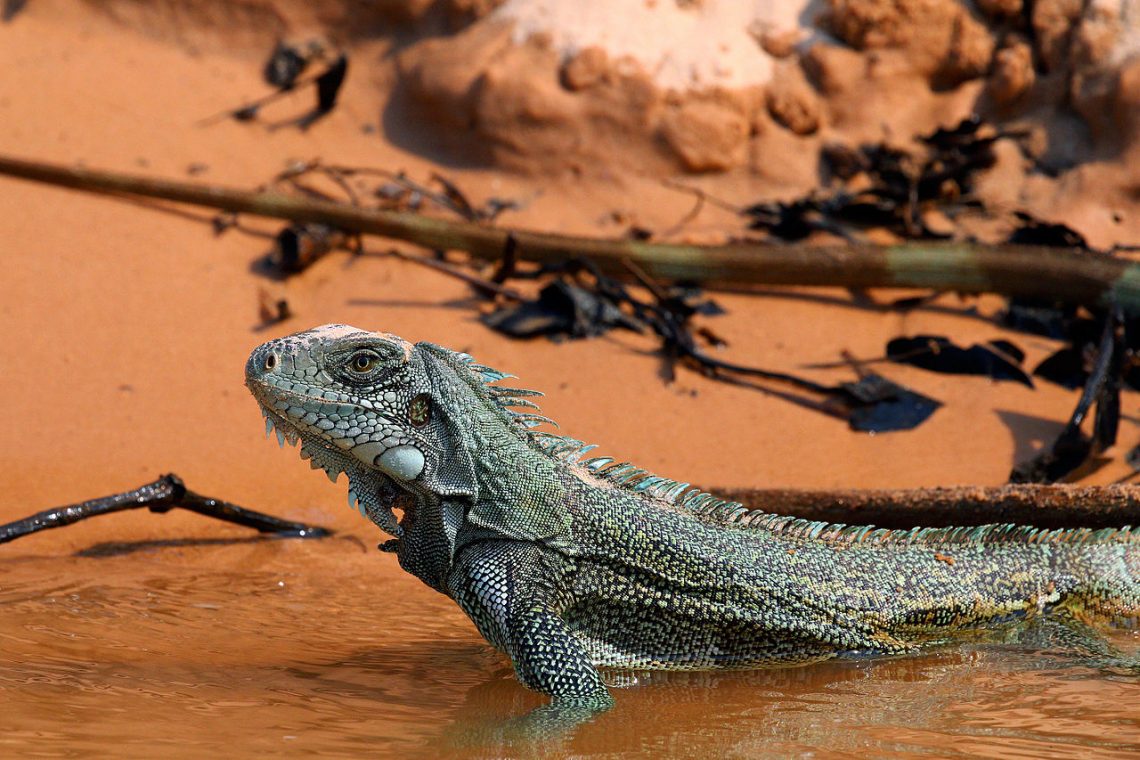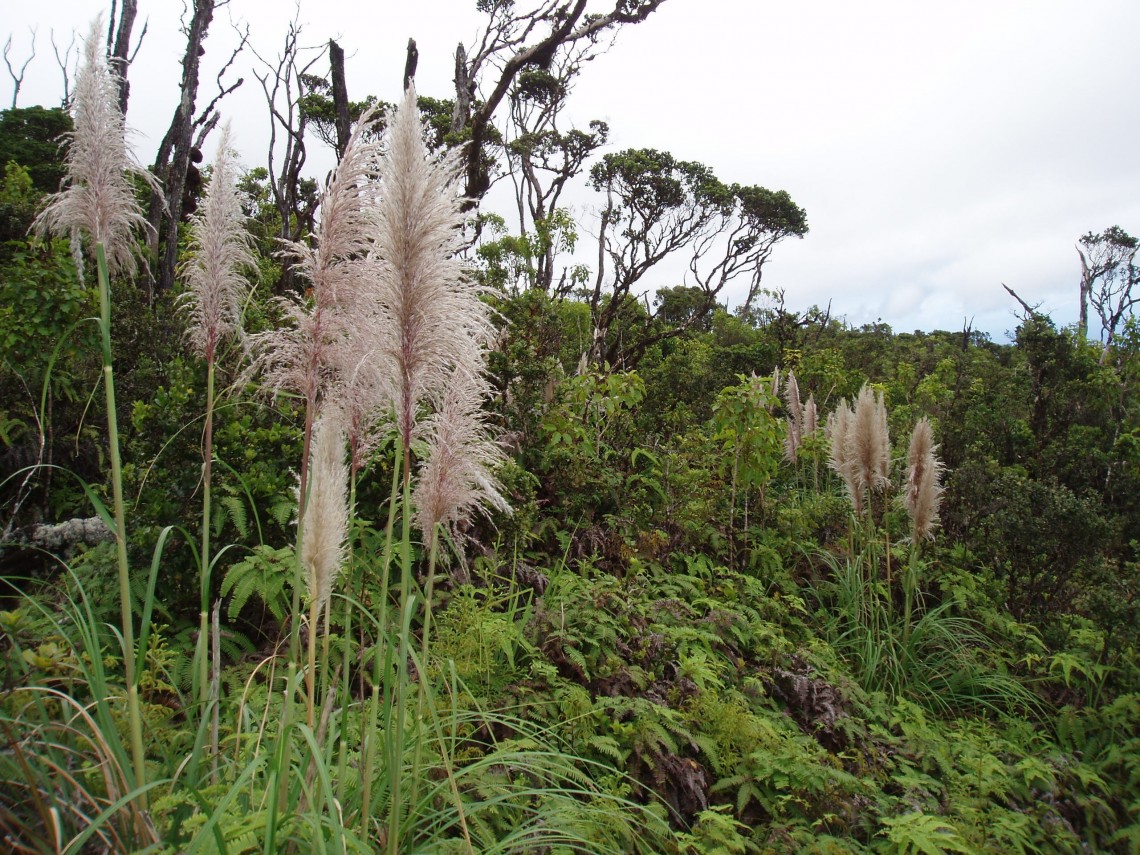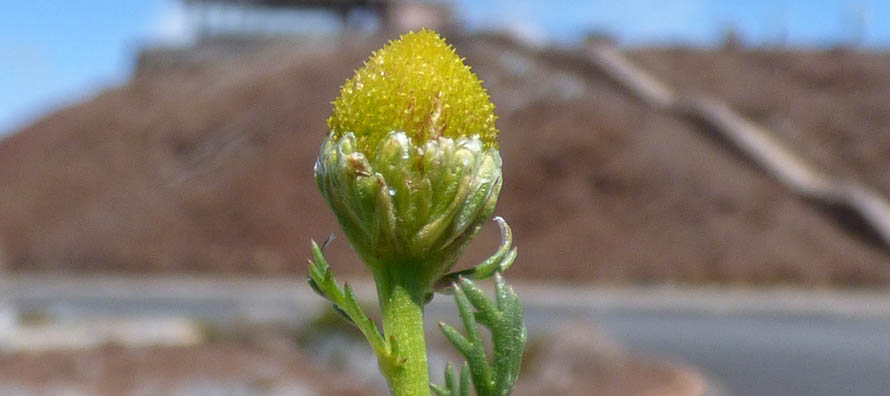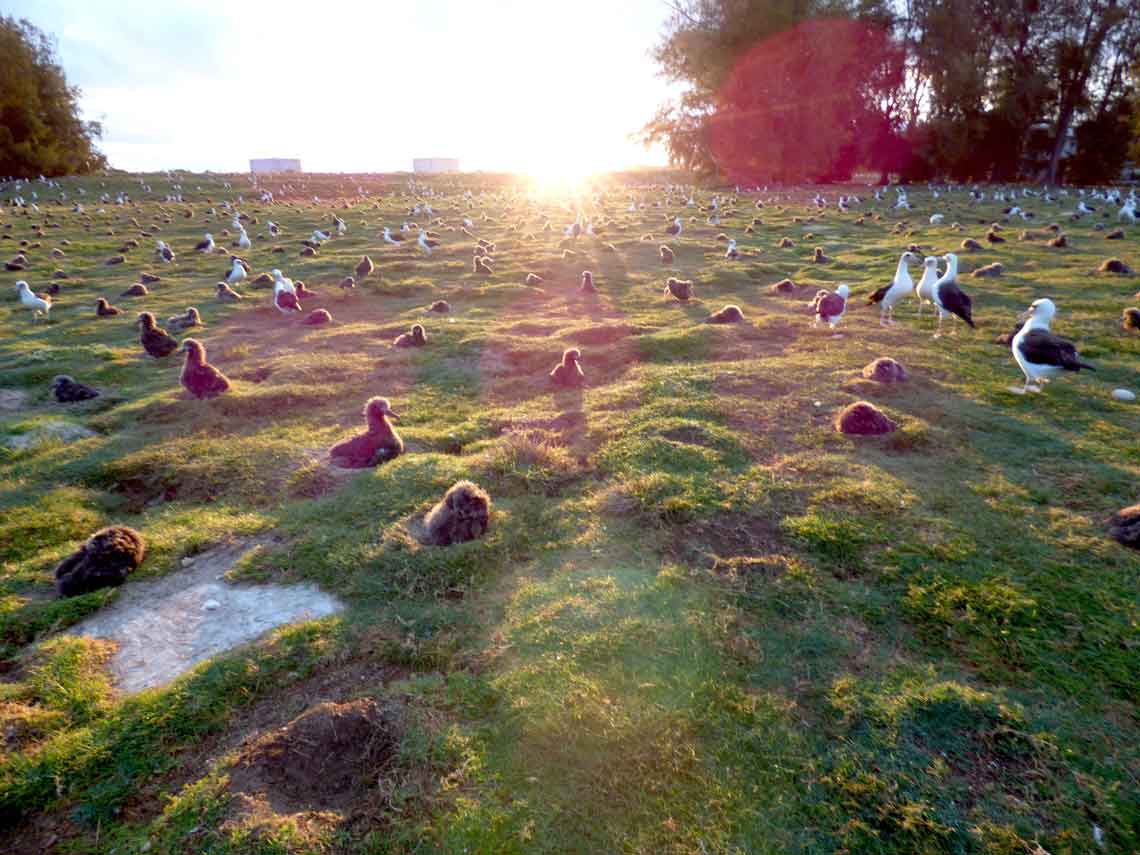Deck the halls with boughs of….holly? ‘Tis the season to decorate your hale with holiday wreaths, sprigs, and boughs. Fresh…
Read More
2015
Iguanas on Maui may be more prevalent than we know
Chuck Chimera only caught a glimpse of the 3-foot long lizard dining on his neighbor’s nasturtiums, but it was enough….
Read More
Pigs and Pampas
At about 4000’ elevation, just east of Koʻolau Gap above Keʻanae on the island of Maui, a four foot tall…
Read More
How did that get here? Strange plants atop Haleakalā
High atop Haleakalā winds whip across the summit, frost crystals sparkle in the morning sun – melting as the day…
Read More
Clearing the weeds for albatross
Midway Atoll has gone to the birds. Every year 3 million seabirds flock to 1,500 acres of land 1200…
Read More





